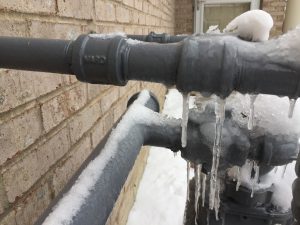Essential Tips to Prevent Frozen Plumbing in Winter: Specialist Guidance
Essential Tips to Prevent Frozen Plumbing in Winter: Specialist Guidance
Blog Article
What're your thoughts on How to prepare your home plumbing for winter weather?

Cold weather can wreak havoc on your pipes, especially by freezing pipelines. Right here's how to stop it from occurring and what to do if it does.
Intro
As temperature levels decrease, the threat of frozen pipelines boosts, possibly resulting in pricey repair work and water damages. Understanding just how to prevent frozen pipelines is crucial for house owners in cool climates.
Recognizing Frozen Pipelines
What causes pipes to freeze?
Pipelines ice up when subjected to temperature levels below 32 ° F (0 ° C) for extended durations. As water inside the pipelines ices up, it increases, taxing the pipeline wall surfaces and potentially causing them to burst.
Risks and damages
Frozen pipelines can lead to supply of water interruptions, residential or commercial property damage, and costly repair services. Burst pipelines can flooding homes and trigger extensive architectural damages.
Indicators of Frozen Water Lines
Identifying frozen pipes early can stop them from rupturing.
How to recognize frozen pipelines
Search for lowered water circulation from faucets, unusual smells or sounds from pipes, and visible frost on subjected pipes.
Prevention Tips
Shielding susceptible pipelines
Wrap pipelines in insulation sleeves or utilize warmth tape to protect them from freezing temperatures. Concentrate on pipelines in unheated or exterior locations of the home.
Home heating techniques
Keep indoor spaces effectively warmed, specifically areas with plumbing. Open cupboard doors to enable cozy air to distribute around pipelines under sinks.
Securing Outside Pipes
Yard hose pipes and outside taps
Detach and drain pipes garden tubes before winter. Install frost-proof faucets or cover outdoor faucets with protected caps.
What to Do If Your Pipes Freeze
Immediate actions to take
If you think icy pipelines, keep taps open up to soothe stress as the ice melts. Make use of a hairdryer or towels taken in hot water to thaw pipelines slowly.
Long-Term Solutions
Structural adjustments
Think about rerouting pipelines away from outside wall surfaces or unheated locations. Add added insulation to attics, cellars, and crawl spaces.
Upgrading insulation
Purchase premium insulation for pipelines, attics, and wall surfaces. Correct insulation helps preserve regular temperatures and minimizes the danger of icy pipelines.
Conclusion
Stopping icy pipes calls for proactive procedures and fast actions. By understanding the reasons, indications, and safety nets, homeowners can protect their plumbing during cold weather.
5 Ways to Prevent Frozen Pipes
Drain Outdoor Faucets and Disconnect Hoses
First, close the shut-off valve that controls the flow of water in the pipe to your outdoor faucet. Then, head outside to disconnect and drain your hose and open the outdoor faucet to allow the water to completely drain out of the line. Turn off the faucet when done. Finally, head back to the shut-off valve and drain the remaining water inside the pipe into a bucket or container. Additionally, if you have a home irrigation system, you should consider hiring an expert to clear the system of water each year.
Insulate Pipes
One of the best and most cost-effective methods for preventing frozen water pipes is to wrap your pipes with insulation. This is especially important for areas in your home that aren’t exposed to heat, such as an attic. We suggest using foam sleeves, which can typically be found at your local hardware store.
Keep Heat Running at 65
Your pipes are located inside your walls, and the temperature there is much colder than the rest of the house. To prevent your pipes from freezing, The Insurance Information Institute suggests that you keep your home heated to at least 65 degrees, even when traveling. You may want to invest in smart devices that can keep an eye on the temperature in your home while you’re away.
Leave Water Dripping
Moving water — even a small trickle — can prevent ice from forming inside your pipes. When freezing temps are imminent, start a drip of water from all faucets that serve exposed pipes. Leaving a few faucets running will also help relieve pressure inside the pipes and help prevent a rupture if the water inside freezes.
Open Cupboard Doors
Warm your kitchen and bathroom pipes by opening cupboards and vanities. You should also leave your interior doors ajar to help warm air circulate evenly throughout your home.

I hope you liked our article on Winter Plumbing Precautions: Preventing Frozen Pipes. Thanks so much for taking time to read our article. Sharing is caring. Helping people is fun. Thank-you for going through it.
Website Report this page